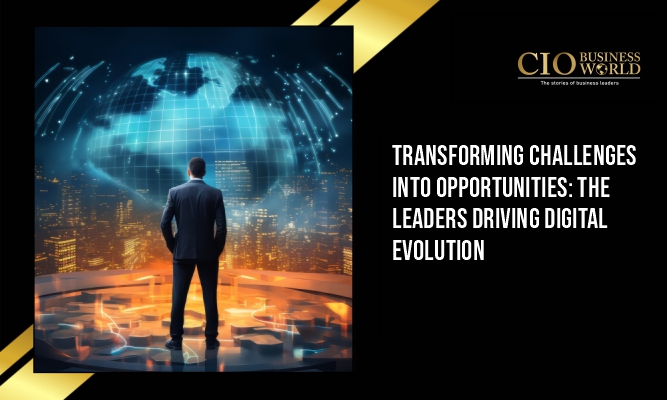In today’s rapidly digitalizing world, disruption has become the new norm. Organizations grapple with fragmented data, outdated infrastructures, cybersecurity threats, evolving regulations, and resistance to change. Yet, with great challenges come great opportunities—and a new generation of leaders is stepping forward to guide the digital evolution with vision, agility, and purpose.
The Digital Conundrum: Barriers That Define the Journey
Across industries, digital transformation initiatives often stall due to legacy systems, manual processes, and strategic misalignments. A recent analysis revealed that while 96% of global organizations have adopted AI, many struggle to harness its full potential due to outdated practices—highlighting infrastructure inefficiencies and inconsistent security policies as key bottlenecks. A similar picture unfolds in the UK, where despite ambitions for innovation, half of businesses still rely on manual workflows and lack cybersecurity awareness—only 29% effectively leverage data for strategic decision-making.
Such challenges are compounded when digital transformation pressures infiltrate business strategy. Organizations must address cultural resistance, invest in infrastructure and skills, mitigate data and regulatory risks, and align digital evolution with core objectives—all while fostering a culture of change.
Leaders at the Helm: Turning Obstacles into Accelerators
Amidst these complexities, certain leaders stand out—transforming disruption into momentum.
- CISOs as Strategic Architects
Today’s Chief Information Security Officers (CISOs) have evolved beyond technical gatekeepers into strategic executives. They align cybersecurity with business goals, communicate risk in boardroom terms, and embed security culture-wide even while tackling budget constraints and regulatory pressures. - AI Trailblazers Across Industries
Business Insider’s “AI in Action” series spotlights leaders like Teresa Heitsenrether (JPMorgan Chase), PwC’s Global Chief AI Officer Joe Atkinson, UPS’s Bala Subramanian, and others. Their efforts range from enterprise-wide GPT deployments and robotics integration to ethics-centric AI governance and sustainable AI solutions—all fueling innovation. - Telecom Visionaries Bridging Divides
At the World Governments Summit, Vodafone’s CEO, Margherita Della Valle, warned that a third of the global population still lacks internet access. She and peers like Hatem Dowidar (Group CEO of e&) are harnessing satellite connectivity, fintech, and cybersecurity to expand access and build inclusive digital infrastructure. - Purpose-Driven Transformation at Accenture
Accenture’s CEO, Julie Sweet, stands out for steering her firm through digital transformation grounded in sustainability, inclusivity, and societal impact—demonstrating how digital leadership can extend well beyond technology. - CIOs as Change Champions
Chad Steighner, Chief Digital and Information Officer at Clarios, urges IT leaders to transcend traditional responsibilities. He champions trust-building, strategic problem-solving, and transparent communication to position tech as a core driver of business growth—not just an operational support function.
What Makes a Digital Leader?
Drawing on academic findings and industry trends, here are the defining attributes of leaders driving digital evolution:
- Visionary and Adaptive
Transformative leaders anticipate and shape future landscapes—they embrace convergence, agility, and strategic foresight to stay ahead in evolution. - Collaborative and Inclusive
They break down silos to foster cross-functional cooperation, enable remote cohesion, and encourage experimentation and shared ownership. - Tech-Savvy yet Human-Centric
Digital literacy is paired with emotional intelligence and team motivation. Leaders tap into tools like AI while nurturing human collaboration, learning, and innovation. - Strategic and Ethical
Alignment with broader goals, maintaining trust through transparency, and upholding ethical digital responsibility are paramount. Concepts like Corporate Digital Responsibility emphasize managing societal, environmental, and data-related risks responsibly.
Strategic Playbook: From Challenge to Catalyst
How do these leaders operationalize transformation? Here’s a breakdown:
- Modernize Infrastructure
Address legacy systems by prioritizing cloud, automation, and programmable operations—essential for unlocking AI’s potential. - Shift to Outcome-Based Models
Move away from rigid project structures toward dynamic engagement. Service NSW’s outcome-based approach boosted efficiency and customer satisfaction—an approach the C-suite must champion. - Embed Security and Data Literacy
Ingraining cybersecurity and data usage into culture builds resilience and trust. Leaders must prioritize training and infrastructure with equal weight. - Invest in Skills and Culture
With 51% of employees expecting job transformations and only 46% feeling adequately upskilled, leaders must invest in training, AI literacy, and flexibility to retain talent. - Ensure Ethical and Inclusive Access
Leaders must reduce digital divides, embrace sustainable technology, and maintain digital fairness. Bridging access gaps, as seen in telecommunications, turns inequality into empowerment, - Lead from the Top with Purpose
Digital transformation starts at the top. Leaders like Sweet and Steighner show how anchoring tech in purpose, ethics, and strategic alignment encourages organizational momentum.
Conclusion
Digital evolution isn’t a distant dream—it’s an unfolding reality full of challenges that double as opportunities. By leading with vision, agility, empathy, and responsibility, today’s executives are turning obstacles into pathways for innovation, inclusion, and growth.
From bridging digital access gaps to driving AI responsibly, these leaders exemplify how technology—and those who steward it—can transform industries and societies. As organizations navigate complexity, the lesson is clear: success lies in leadership that turns disruption into destiny.









